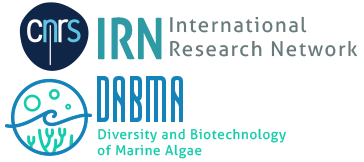- Program symposium for two half days
- Five sessions, one for each of the 4 work packages plus final general discussion (60 min)
- Up to three 15 min talks per session, each followed by 5 min of questions, then 30 min general discussion for each work package.
- Talks can present results or future projects (or both). It would be particularly interesting to present some of the newly funded projects that have recently been started in Chile.
- General discussion at the end to address the networks objectives, functioning and other questions.
Meeting schedule:
| Time Ch. | Time Br. | Time Fr. | Day | Session | Activity |
| 8h30-10h00 | 9h30-11h00 | 14h30-16h00 | 5th July | WP1. Biodiversity and environmental impact | Talk Q&As (60′), WP discussion (30′) |
| 10h30-11h30 | 14h30-15h00 | 16h00-16h30 | break | ||
| 10h30-12h00 | 15h00-16h30 | 16h30-17h00 | WP2. Life histories and microevolution | Talk Q&As (60′), WP discussion (30′) | |
| 8h30-10h00 | 9h30-10h30 | 14h30-16h00 | 6th July | WP5. Interactions and adaptation | Talk Q&As (60′), WP discussion (30′) |
| 10h00-10h30 | 14h30-15h00 | 16h00-16h30 | break | ||
| 10h30-11h20 | 15h00-15h50 | 16h30-17h20 | WP4. Biotechnology | Talk Q&As (20′), WP discussion (30′) | |
| 11h20-11h50 | 15h50-16h20 | 17h20-17h50 | break | ||
| 11h20-12h50 | 16h20-17h20 | 17h50-18h20 | General | General discussion (60′) |
We plan to include 1 min presentations from each participating member laboratory summarising their main research projects and their interest in the network. These could be during the general discussion or during the discussion sessions for each WP.
WP1
- Menezes et al.. Ten years of phytoplankton biodiversity in two eutrophic urban coastal systems.
- Faria et al.. Population studies in Gracilariopsis tenuifrons (Gracilariales, Rhodophyta): physiological and molecular approaches.
- Cock et al. Brown algal comparative and functional genomics.
WP2
- Ayres-Ostrock et al.. Unraveling the genetic structure of Gracilaria caudata (Gracilariales, Rhodophyta) along the Brazilian coast.
- Marchi & Plastino. Reproductive chimeras: the development of epiphytic gametophytes of Gracilaria caudata (Gracilariales, Rhodophyta) on the tetrasporophytic generation as a genetically determined evolutionary strategy.
- Valero et al.. Description of mixed phase variants in populations of Gracilaria gracilis.
WP3
- Cid Alda et al.. Communities of Chilean Bangiales: existence of bacterial communities specific to macroalgae host species?
- Lavaut et al.. Factors that may maximize gamete encounters in red alga
- Mendonça et al.. Microbiome changes in a stranding simulation of the holopelagic macroalgae Sargassum natans and Sargassum fluitans.
WP4
- Buschmann et al.. Seaweed farming and Carbon sequestration: desires and facts.

